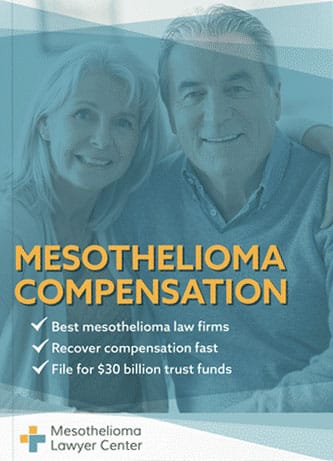Libby, Montana, remains one of the most infamous asbestos contamination sites in the U.S. The Libby site alone has caused thousands of mesothelioma and asbestosis cases after W.R. Grace mined asbestos-contaminated vermiculite here for decades.


FREE Financial Compensation Packet
- Info on law firms that will recover your HIGHEST COMPENSATION
- Learn how to get paid in 90 days
- File for your share of $30 billion in trust funds
How Did Libby, Montana, Get Contaminated with Asbestos?
This small town in Lincoln County, Montana, was once home to a dangerous vermiculite mining operation for decades. From 1919 to 1990, the W.R. Grace mine produced vermiculite contaminated with asbestos and shipped it all over the country to be processed.
The final product went into construction products, mostly insulation. The type of asbestos found naturally in the Libby mine is particularly friable and, therefore, harmful.
While people around the country have been affected by the asbestos in Libby vermiculite, the residents of the small Montana town have felt most of the consequences.
The U.S. Environmental Protection Agency (EPA) and the state of Montana continue to work on the cleanup of the Superfund site. W.R. Grace, the company responsible for the asbestos production, still pays people who became sick from the exposure.
The History of Vermiculite and Asbestos in Libby
- Mining in Libby dates back to the gold rush. Gold miners in the area discovered vermiculite in 1881.
- In 1919, E.N. Alley bought the claims for the resources in the Vermiculite Mountain deposit. Alley’s company began mining vermiculite and called itself Zonolite.
- The Zonolite Company operated in Libby until 1963 when W.R. Grace bought it. The new company continued the operation uninterrupted and kept producing vermiculite ore and concentrate until the mine shut down in 1990.
- Even before W.R. Grace took over operations at the mine, workers in the facility had complained of lung problems. Many workers died. The company, at the time, did not acknowledge that these illnesses and deaths were in any way related to the mine. W.R. Grace has since been accused of knowing about the presence of asbestos in the vermiculite it mined and failing to warn workers of the risks.
- The W.R. Grace mine in Libby produced about 80% of the world’s vermiculite while it operated. It shipped harmful, asbestos-contaminated vermiculite to processing facilties throughout the U.S. This put workers in many locations at risk of asbestos exposure, not just in Libby.
- The EPA responded to concerns about the mine beginning in 1999. By 2002, it had listed the area as a Superfund site on the National Priorities List.
- The EPA declared Libby a Public Health Emergency in 2009, the first time the agency had ever made that declaration. This allowed people affected by the mine to receive federal health care assistance.
- The EPA completed cleanup of the majority of the Libby site in 2018. All that remained was to tackle the mine itself and nearby forested areas.
About Vermiculite and Asbestos
Both vermiculite and asbestos are natural minerals that can be mined from deposits in the earth.
What Is Vermiculite?
Vermiculite is a mineral that expands when heated, known as exfoliation. It was used in molded boards for fireproofing, soundproofing, or heat insulation.
It can also be used in other construction materials, as a soil-free growing medium, or mixed into the soil. These are just a few of the more common uses for vermiculite.
What Is Asbestos?
Asbestos is a similar set of minerals with similar properties. Companies used it to make insulation and add strength and fireproofing to construction and ship materials, brakes and clutches, and industrial equipment.
Asbestos is extremely harmful to health. Asbestos fibers can lodge in the body and cause life-threatening illnesses, including malignant mesothelioma, lung cancer, or asbestosis.
What Type of Asbestos Is in Libby, MT?
The Libby mine is contaminated with a type of asbestos called tremolite-actinolite series. The specific asbestos in Libby has come to be known as Libby Amphibole asbestos, or LA.
This kind of asbestos is highly friable, which means it sheds fibers very easily. This characteristic makes Libby asbestos very harmful to human health.
How Has Libby Vermiculite and Asbestos Affected People?
Decades of operation at the Libby mine took a toll on miners and the people in the nearby town. The mine is located just seven miles outside the town of Libby. The asbestos in the mine affected miners but also residents in the town nearby and workers in vermiculite plants nationwide.
Asbestos Diseases in Miners
The miners have been affected the most, with many getting sick with asbestosis, a progressive lung scarring disease, lung cancer, or mesothelioma.
These illnesses usually take decades to manifest, so the total impact of the asbestos in the mine is still not fully known. Someone who worked in the mine 40 years ago may now get sick.
One study found that death from asbestosis among Libby miners was 165 times higher than in the general population.
In the same study, researchers found that 18 percent of people living in Libby had pleural abnormalities in chest X-rays. These were consistent with asbestos exposure. More than half of the miners had these abnormalities.
Asbestos and Libby Residents
The initial EPA study of the area found Libby Amphibole asbestos fibers in indoor and outdoor air, vermiculite insulation and other materials, soil, water, and indoor dust. Fibers were also found in fish and animal tissue in the area.
All of this contamination put residents of Libby and the surrounding area at risk of exposure and resulting illnesses.
Among both miners and residents, overall asbestosis, lung cancer, and mesothelioma rates were much higher than the national average over 20 years of study.
The town of Libby has a population of only about 2,600. Some reports have indicated that nearly 200 people died because of asbestos, and another 1,000 are sick to some extent.
Asbestos at Vermiculite Processing Sites
While the miners and those who lived near the mine were most affected by Libby vermiculite, people around the country were also at risk of exposure to asbestos because of W.R. Grace.
The mine produced most of the vermiculite used in the U.S. at the time. It operated and shipped out millions of tons of vermiculite concentrate to facilities that processed it and made it into products like insulation.
The Agency for Toxic Substances and Disease Registry (ATSDR) evaluated 28 Libby vermiculite processing sites. The ATSDR chose these sites because they processed large amounts of Libby vermiculite, and the EPA designated them as sites that need further cleaning.
The evaluation ultimately found that asbestos dust is still an issue in the facilities that processed Libby vermiculite. People who worked in these facilities risked harmful asbestos exposure.
Is Vermiculite Insulation Safe?
Numerous homes and other buildings in the U.S. still contain vermiculite insulation that originated in Libby, which means these homes likely contain asbestos. During the years that the mine operated, Libby produced 70 percent of all vermiculite used in the U.S.
Any vermiculite insulation from 1919 and 1990 is likely to be the contaminated Libby material. The EPA recommends that homeowners treat any vermiculite insulation as if it contains asbestos and have it handled and abated by a professional asbestos worker.
Asbestos Lawsuits Over W.R. Grace and Libby Asbestos
Workers, residents, and family members have filed lawsuits and made compensation claims. Victims and their lawyers have claimed W.R. Grace knew about the risks of working and living near the mine yet did not warn workers or provide safety equipment or training. The state of Montana and its insurer has also faced lawsuits and fines.
- W.R. Grace initially faced about 150 asbestos lawsuits. It settled most of these, while a few went to trial.
- W.R. Grace filed for bankruptcy in 2001, creating an asbestos trust fund as part of the process. The company tried to protect its assets in subsidiaries. The Department of Justice found this move fraudulent. It required W.R. Grace to fund an asbestos trust with $1.8 million.
- A lawsuit involving about 1,300 plaintiffs resulted in a $43 million settlement from the state of Montana. The state began making payments to the plaintiffs in 2012, ten years after they started the lawsuit.
- The state was again required to pay victims as the result of a lawsuit settled in 2017. This suit involved more than 100 plaintiffs and resulted in a $25 million settlement. Plaintiffs and their lawyers argued that Montana health officials knew about the dangers of the W.R. Grace mine but did nothing to protect residents.
- In 2023, W.R. Grace and the state of Montana reached a settlement after years of negotiations. The company agreed to pay $18.5 million to the state for damage to natural resources.
- Although W.R. Grace went bankrupt, some victims continue to fight for compensation from the company’s insurer. In 2022, Ralph Hutt, a former miner, won a jury award of $36.5 million to be paid by Maryland Casualty Company, which provided workers’ compensation insurance for W.R. Grace.
- In 2021, the Montana Supreme Court made an important decision that would help compensate more victims. The Court affirmed earlier rulings that the state’s insurer must pay $98 million, funds that will go to exposure victims.
- In 2023, the Center for Asbestos Related Disease (CARD) was ordered to pay $6 million in fines and damages to the government. CARD was set up as a clinic to help local victims of asbestos exposure. CARD was found guilty of submitting hundreds of false claims. It filed for bankruptcy after the ruling.
Libby Asbestos Site Cleanup Activities
The Libby mine is listed as an EPA Superfund site. Most of the site has been remediated. The EPA delisted areas of the site in 2019, 2020, 2021, and 2022.
The EPA conducted a final risk assessment in 2015 and declared the indoor and outdoor cleanup efforts successful.
As of 2018, the EPA finished cleaning more than 2,600 properties in the area. This includes Libby and the city of Troy, about 20 miles from downtown Libby. The EPA has removed over one million cubic yards of asbestos-contaminated soil from the area.
The areas that the EPA has completed remediating in and around Libby and Troy include all:
- Schools
- Parks
- Residences
- Commercial buildings
- Vermiculite processing plants
- Public areas
Is Libby, Montana, Safe From Asbestos Today?
The town of Libby and most of the surrounding area is much safer today. According to the EPA, the amount of asbestos in the air downtown is 100,000 times less than when the mine operated.
The surrounding forests are still contaminated and continue to pose a risk. When soil and dust become airborne, asbestos fibers can blow into town and expose residents.
This risk became clear in August 2023 when forest fires began burning in Libby’s so-called Asbestos Forest. That part of the fire was dealt with aggressively. Ash from the fire likely contains asbestos and could be carried to nearby areas by the wind.
Seeking Legal Help After Asbestos Exposure in Libby
If you believe that you were exposed to asbestos and got sick due to that exposure, and you can trace that exposure to Libby vermiculite, you may have a case to make against W.R. Grace.
The company still sees lawsuits, and many victims have successfully won settlements.
Contact an experienced Libby mesothelioma or asbestos lawyer to find out if you have a case. Find out what steps you need to take next to get justice for yourself or a loved one.

Paul Danziger
Reviewer and EditorPaul Danziger grew up in Houston, Texas and earned a law degree from Northwestern University School of Law in Chicago. For over 25 years years he has focused on representing mesothelioma cancer victims and others hurt by asbestos exposure. Paul and his law firm have represented thousands of people diagnosed with mesothelioma, asbestosis, and lung cancer, recovering significant compensation for injured clients. Every client is extremely important to Paul and he will take every call from clients who want to speak with him. Paul and his law firm handle mesothelioma cases throughout the United States.
References
- U.S. Environmental Protection Agency. (n.d.). Superfund Site: Libby Asbestos Site, Libby, MT.
Retrieved from: https://cumulis.epa.gov/supercpad/cursites/csitinfo.cfm?id=0801744 - Agency for Toxic Substances and Disease Registry. (2008, October 29). Summary Report Exposure to Asbestos-Containing Vermiculite from Libby, Montana, at 28 Processing Sites in the United States.
Retrieved from: https://www.atsdr.cdc.gov/asbestos/sites/national_map/summary_report_102908.pdf - U.S. Environmental Protection Agency. (2023, June 5). Protect Your Family from Asbestos-Contaminated Vermiculite Insulation.
Retrieved from: https://www.epa.gov/asbestos/protect-your-family-asbestos-contaminated-vermiculite-insulation - U.S. Environmental Protection Agency. (2021, September 14). EPA Deletes Portion of Libby, Montana Superfund Site From National Priorities List.
Retrieved from: https://www.epa.gov/newsreleases/epa-deletes-portion-libby-montana-superfund-site-national-priorities-list - Bolton, A. (2020, January 28). Another Libby Asbestos Site Is Ready For Delisting, EPA Says. Montana Public Radio.
Retrieved from: https://www.mtpr.org/montana-news/2020-01-28/another-libby-asbestos-site-is-ready-for-delisting-epa-says - Scott, T. (2021, September 28). EPA Deletes Portion of Superfund Site from National Priorities List. Flathead Beacon.
Retrieved from: https://flatheadbeacon.com/2021/09/28/epa-deletes-portion-of-superfund-site-from-national-priorities-list/ - Masters, L.S., McDermott, P.M., and Hudgins, R.E.. (2022, January 19). Landmark Montana Supreme Court Decision Series: Trigger and Allocation. Lexology.
Retrieved from: https://www.lexology.com/library/detail.aspx?g=994be008-665c-4f59-aabd-dd458dc61d93 - Huslin, A. (2008, April 8). W.R. Grace to Settle Asbestos Claims For $1.8 Billion, Start New Chapter. The Washington Post.
Retrieved from: https://www.wrgraceasbestostrust.com/ - Scott, T. (2017, January 19). Libby Asbestos Victims Reach $25 Million Settlement with State. Flathead Beacon.
Retrieved from: https://flatheadbeacon.com/2017/01/19/libby-asbestos-victims-win-25-million-settlement-state/ - State of Montana Newsroom. (2023, January 10). Governor Gianforte Announces $18.5 Million Settlement for Libby Asbestos Site.
Retrieved from: https://news.mt.gov/Governors-Office/Governor_Gianforte_Announces_18.5_Million_Settlement_for_Libby_Asbestos_Site - AP News. (2022, February 23). Jury Awards $36.5M to Former Libby Miner with Lung Disease.
Retrieved from: https://apnews.com/article/business-health-environment-and-nature-lawsuits-lung-disease-ca126258fe42741bcab57961ffd0e4ff - Murdock, J. (2023, August 1). Western Montana Fires Grow; Libby Asbestos Forest Burning. Bozeman Daily Chronicle.
Retrieved from: https://www.bozemandailychronicle.com/news/environment/western-montana-fires-grow-libby-asbestos-forest-burning/article_2dd57840-8581-5a1b-bc73-a1d762d8d066.html - Brown, M. (2023, July 22). Judge Orders Montana Health Clinic to Pay Nearly $6 Million Over False Asbestos Claims. The Associated Press.
Retrieved from: https://apnews.com/article/asbestos-clinic-libby-montana-bnsf-fraud-15dce72a91072e3131cf23494d3dd4f6
